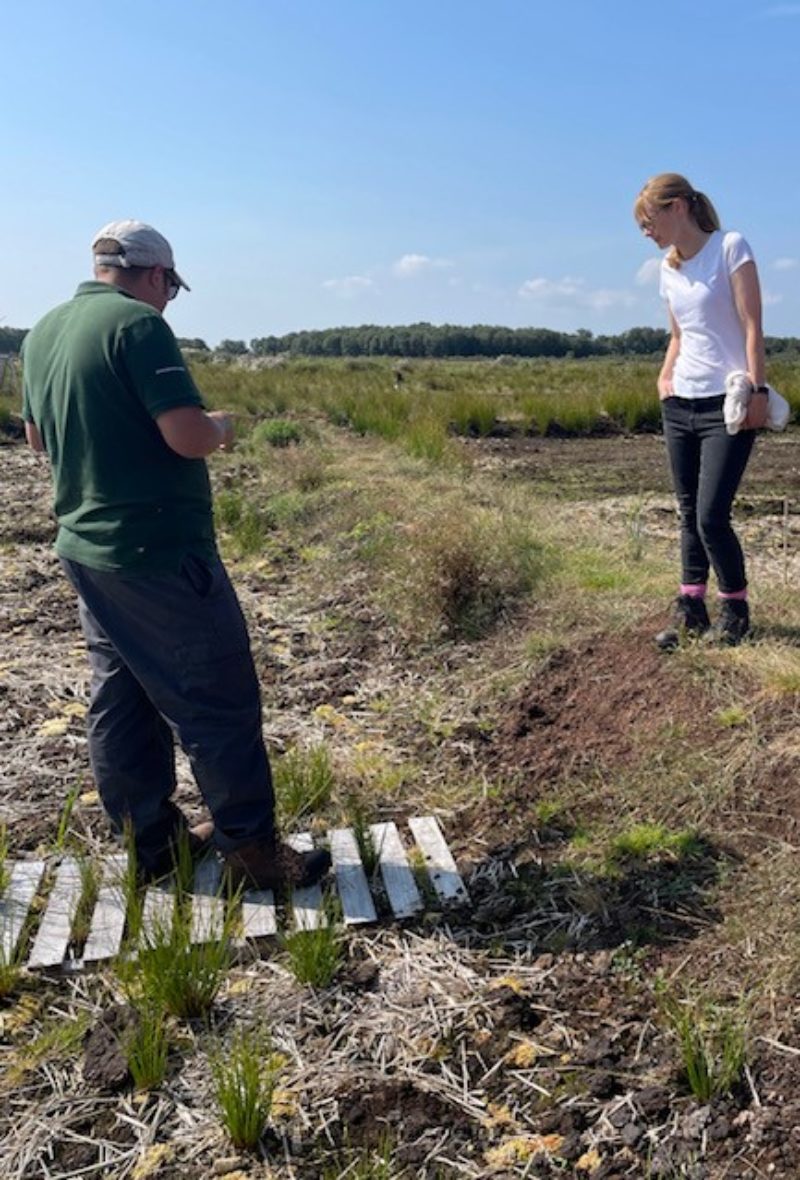Cat Smith Working for Lancaster and Fleetwood

Today I was really lucky to have the opportunity to visit Winmarleigh and Cockerham Moss – Lancashire’s best example of a lowland raised peat bog. The reserve is a real hidden gem, but is still recovering from a chequered past.
Drained and exploited for peat extraction, the Moss suffered serious degradation until it’s fortunes began to turn around in the 1990’s when English Nature started to re-wet and restore the land. Then in 2010 and 2012 the Wildlife Trust for Lancashire
Manchester and North Merseyside bought Cockerham Moss and Winmarleigh Moss to safeguard the plants and animals, and began restoring this invaluable landscape.
After years of destructive activity, the Moss is drying out and losing its important animal and plant-life. Thankfully, the staff and volunteers are working hard to rewet the moss and encourage the regrowth of important plants.
The team have constructed more than 4km of peat bunding to help hold water on the reserve. Supported by our other restoration work, Winmarleigh and Cockerham Moss is beginning to thrive once more.
Common lizards can be spotted scuttling amongst the vegetation and fascinating plants like the carnivorous round-leaved sundew lurk underfoot. Sphagnum moss is beginning to regrow, and the beautiful red rubies of bog cranberry can be seen across the reserve. Most exciting of all, the rare large heath butterfly flies across the boggy areas of Winmarleigh Moss between late June and early August.
Shockingly 98 % of our lowland peatland habitats have been destroyed.
Despite peatlands being a vital part of our heritage and listed as a UK Priority Habitat, they are hugely undervalued and regarded as wastelands to be exploited for peat.
Healthy peatlands are wet and boggy. Combined with low oxygen conditions, this moisture means plant material doesn’t rot and is instead compressed into acidic peat soil. The soil has very few nutrients; specialist conditions that nurture a range of important plants that have perfectly adapted to survive in this unique environment.
Thanks to the wet, acidic, low nutrient conditions, peatlands have the ability to store millions of tonnes of carbon dioxide that has been absorbed over thousands of years, helping in the fight against climate change. Not only that, but they reduce the risk of flooding by soaking up water during periods of high rainfall and gradually releasing it over time. By contrast, a degraded peatland actively leaks carbon into the atmosphere.
Congratulations to the team for doing such an amazing job to ensure this vital resource prospers – for the future of our planet and people.
